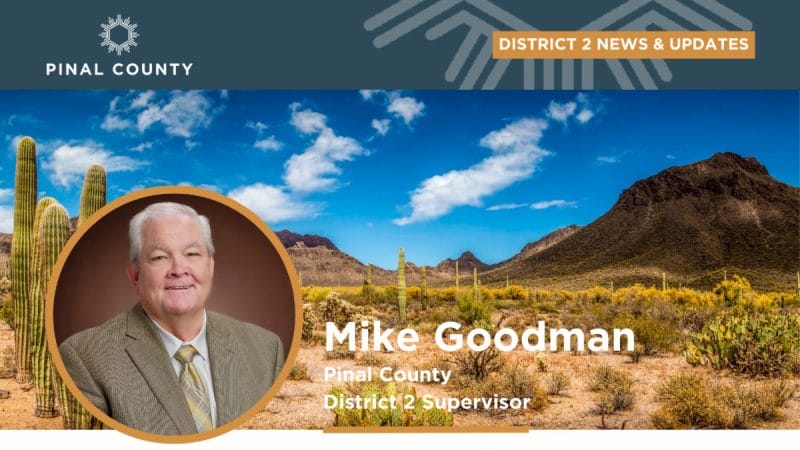Earmarking for teacher pay won’t work. A broad, bipartisan coalition is required.
ROBERT ROBB
Substack
GOP legislators say they will refer a ballot proposition extending a higher distribution from the state land trust beyond its expiry in 2025. And do so in a way that earmarks revenues directly to teacher pay, producing a raise in the range of $4,000 a year.
There are several lessons to decoct from this, and some rhetorical scores to settle. Unfortunately, that requires a fairly lengthy excursion into the weeds. Sorry about that.
At statehood, Arizona was granted expansive tracts of land to be managed as a trust. The largest beneficiary, by far, is K-12 schools.
Prior to 1998, the trust fund was limited to fixed-income investments, so the distribution calculation was simple and direct. Whatever income the fund produced annually was subvented to the schools.
In 1998, voters approved allowing up to 60% of the fund to be invested in equities. That raised the complicated question of how to treat unrealized capital gains in deciding what to distribute to the schools annually. On the one hand, until they are realized, they are not truly known or real. On the other hand, not considering them at all would sharply reduce what was distributed to schools annually as interest-bearing instruments gave way to stocks.
The answer in the 1998 ballot measure was to calculate the average rate of return over a five-year period, including unrealized capital gains. And then distribute that amount minus the average inflation rate over the same period.
The policy rationale for the inflation reduction was to preserve the purchasing power of the trust’s principal. But that meant that annual distributions weren’t being inflation protected, thus eroding their value for schools and current students.
In addition to eroding the value of the annual distributions, the 1998 formula produced highly volatile and inconsistent results, creating problems for school budgeting. When Doug Ducey was state treasurer, he proposed, and voters approved, replacing the 1998 formula with a flat 2.5% distribution of the five-year average of the trust’s corpus. But only for a period of ten years, after which the 1998 formula would come back to life.
That brings us to 2016 and Proposition 123, one of more perplexing political sagas I’ve witnessed.
Earlier in the decade, before Ducey became governor, the Legislature, to cope with the aftermath of the housing bubble bursting, skipped a couple of inflation adjustments to the “base level” in the school finance formula. That’s a per-pupil amount that is the beginning point for calculating state aid to schools. The schools sued, arguing that Proposition 301, establishing the special sales tax for education approved by voters in 2000, required an annual inflation adjustment. The Arizona Supreme Court said that was right.
The litigation continued regarding a dispute over how much was owed with the Legislature arguing that it should get credit for the amounts over inflation it had, in some years, appropriated.
At first, Ducey avoided getting involved in the lawsuit. But after an attempt at judicial mediation failed, he stepped in and negotiated a settlement that was encompassed in Prop. 123, put before voters in May of 2016.
The settlement included a substantial commitment of additional general fund support for K-12 education. But a majority of the new funding came from increasing the annual state land trust distribution from 2.5% to 6.9% for a period of ten years. This time, the reversion would be to the 2.5%, not the complicated 1998 formula.
Approval ought to have been a no-brainer. It added hundreds of millions of additional dollars to K-12 schools annually, at a time they were still recovering from cuts to cope with the housing bubble bursting. The schools, the trust’s beneficiary, and the teachers’ union supported it. There was no tax increase involved.
Nevertheless, there was some neurological seizure that took place on the left, suspending critical thought. Opposition from the left was intense and the measure barely passed.
The arguments against were extraordinarily and obviously threadbare.
The claim was made that the higher distribution would erode the corpus. Too high of a distribution, went the argument, hurts future students.
Equally so, too low of a distribution hurts current students, and it was clear that the 2.5% figure was way too low. That should have been self-evident to anyone bothering to think about it. At the time, I calculated that the trust fund had retained $1.7 billion in earnings that could have been distributed while keeping the corpus protected from inflation.
Was 6.9% too high? It was in range of what the return on investment had been running at the time. So, any dip into principal would be minor, particularly compared to the benefits of settling the lawsuit and giving schools hundreds of millions in badly needed additional funding.
The campaign for Prop. 123 didn’t really respond to these attacks from the left, and to a smaller and less consequential extent from some on the right. The yes campaign was mostly rah-rah education and testimonials from educators and others. I was one of a lonely few making the case that the current distribution formula was badly shortchanging the schools and that the 6.9% distribution wouldn’t really pose a threat to the corpus.
Now for the rhetorical score settling. Since passage of Prop. 123, the trust’s corpus has increased by over 40%. According to the state treasurer, over the last ten years the average rate of return for the trust has been well over 7%. Current schools and children are no longer being shortchanged, the higher distribution hasn’t required dipping into principal, and additional sales and leases have substantially increased the trust’s corpus.
That’s a long-winded way of saying that the distribution shouldn’t revert back to 2.5%. A ballot measure with a higher distribution somewhere around where Prop. 123 put it should be referred to the ballot in 2024, as GOP legislators are vowing to do. And this time, the higher distribution figure should be permanent law and not expire.
However, there is a policy and a political lesson that GOP lawmakers should keep in mind as they proceed.
The policy lesson regards teacher pay and the fungibility of money.
The GOP legislators say they will earmark the proceeds of a higher distribution extension for teacher pay and contend it will produce about a $4,000 raise. They undoubtedly believe that will increase the political popularity of the measure, and perhaps they even believe teacher pay should be more of a priority in the dispersal of education dollars.
The experience of a similar requirement in Prop. 301 should be a cautionary warning about the probable futility of this approach. The voter-approved version of Prop. 301 required that 60% of the sales tax revenue flowing into the classroom site fund be used to increase teacher pay. When the Legislature extended the tax after the expiry of the voter-approved version, that requirement was apparently dropped. But it existed until 2021.
In 2021, that should have resulted in an increase in average teacher pay over what it otherwise would have been of around $10,000. In a study produced in the same fiscal year, Matt Beienburg, an education scholar at the Goldwater Institute, calculated that if adjusted for inflation, the average teacher pay in 1980 would clock in at about $53,500. Per-pupil funding since then has increased much greater than inflation.
So, with the legislated boost from Prop. 301, the average teacher pay in Arizona in 2021 should have been in the vicinity of $63,000. Instead, it was just $56,350 – not much more than a straightforward inflation adjustment.
Now, a word of caution about “average teacher pay”. As a growing state, Arizona is disproportionately in the market for younger teachers, who are generally paid less. As the experience mix tilts younger, that puts a drag on average teacher pay that has nothing to do with policy decisions, good or bad. Nevertheless, a shift in the experience mix doesn’t come close to explaining the shortfall from what Prop. 301 was supposed to achieve with respect to teacher pay.
What does explain it is the fungibility of money. If the Legislature, or the voters, dictate that funds from certain sources be used for certain purposes, that frees up other funds that otherwise would have gone to those certain purposes for other things. There’s nothing sinister about this. The schools face lots of needs. The money that, absent an alternative dedicated source for it, might have been spent on teacher salaries isn’t being wasted. And the displacement mostly occurs unconsciously.
Market pressure is the only reliable force to increase teacher pay, and Arizona has developed a nascent robust K-12 education marketplace. The better course would be to provide funding to education providers without strings, and let them compete for students. That competition should be based, at least in part, on the relative quality, stability, and longevity of their faculties. There’s not a lot of competition on that basis happening now. But with substantially increased funding and competition, there’s reason to hope, and expect, that it will emerge.
The political lesson is the eyelash by which Prop. 123 passed. It had everything going for it: the support of the governor; Ducey’s fundraising prowess for a campaign, particularly within the business community; the support of the schools and the teachers’ union.
This crop of GOP legislators has none of that going for it, at least at present. If they think they can just put whatever they want on the ballot and it will pass because there’s no alternative, they are miscalculating, badly. The consequences of defeat in 2016 were significantly more dire than they will be in 2024, yet it almost happened.
If GOP legislators are serious about not allowing an unjustifiable reduction in the state land trust distribution to schools of hundreds of millions of dollars annually, they need to proceed in a bipartisan fashion that includes stakeholder input. A reasonable ask from Democrats and education groups would be dropping the triggers in Prop. 123 that permit education cuts in certain circumstances.
Whether the GOP legislators are serious, or just engaged in some political preening, will be revealed by how they proceed.
Reach Robb at robtrobb@gmail.com.

Longstanding legal challenge against 2023 elections manual finally laid to rest
By Kiera Riley | State Affairs The Arizona Free Enterprise Club and America First Policy Institute’s legal challenge to three provisions in the 2023 Elections







